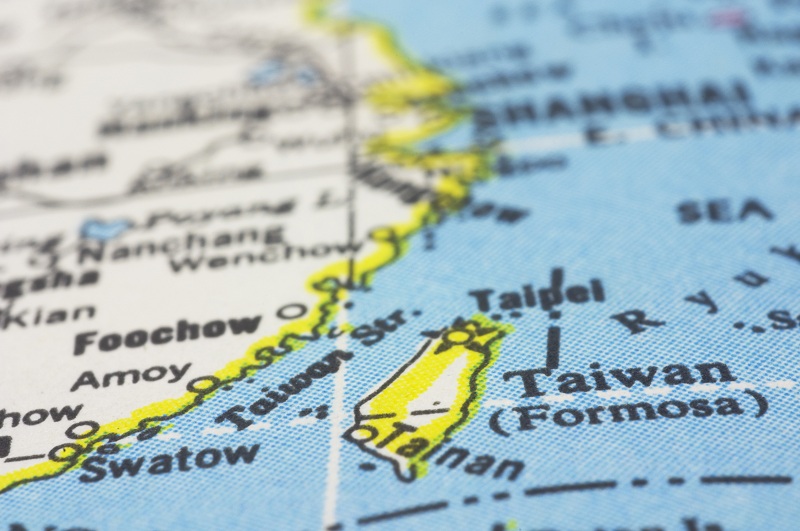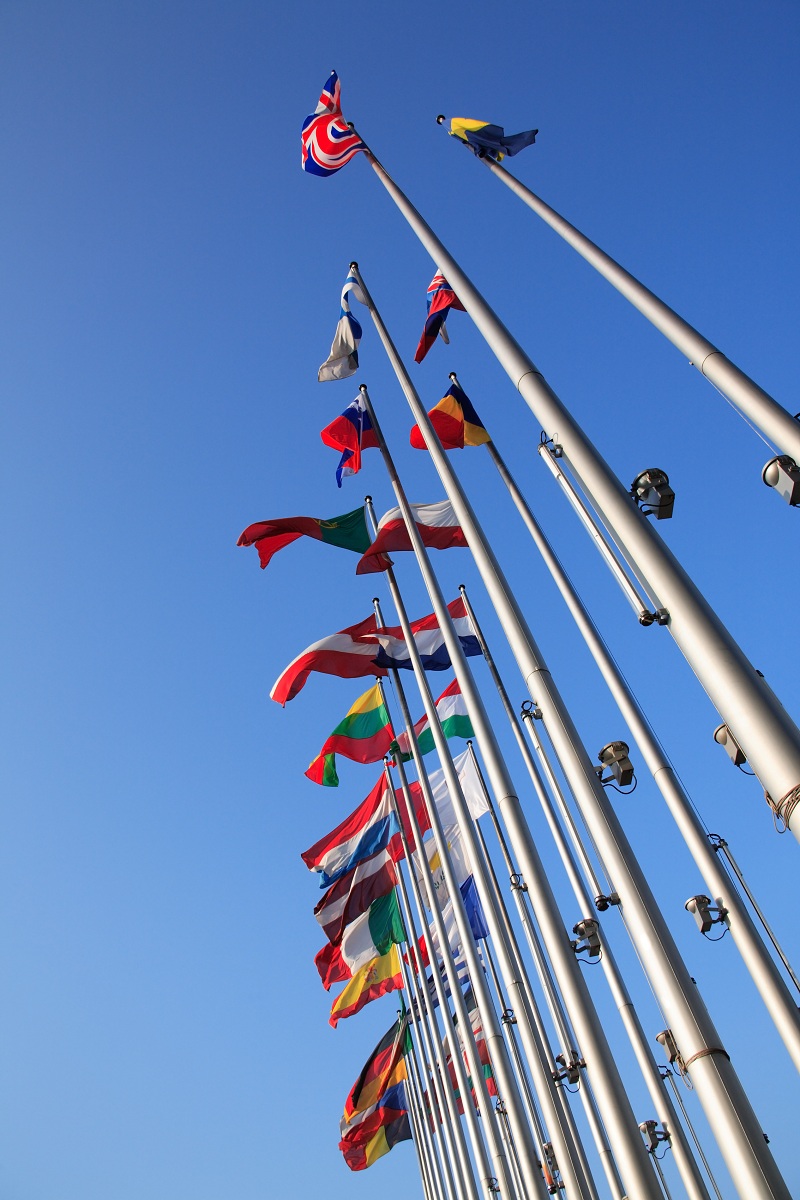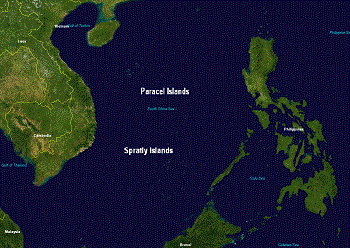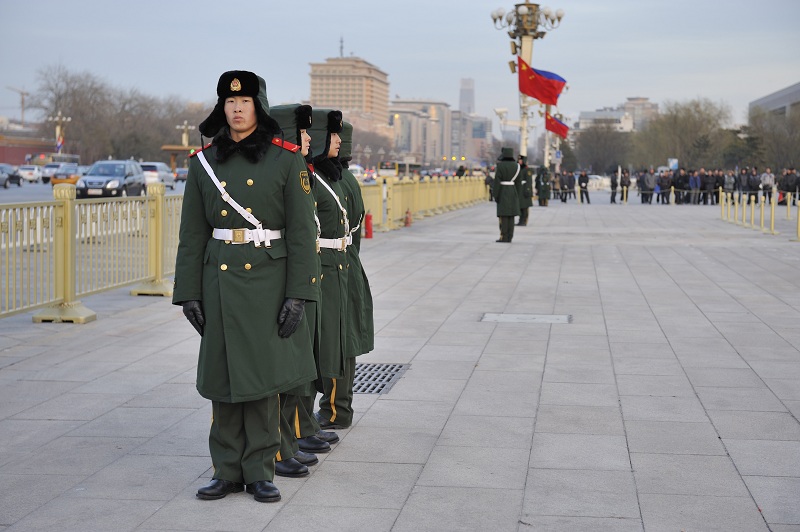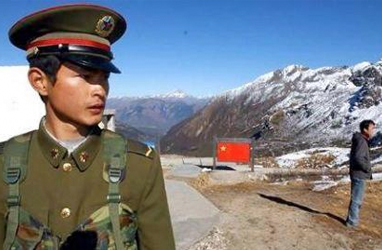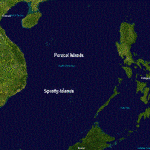Sino-Japanese Relations: In the Shadow of History
An Overview
There can be no doubt that China and Japan are the giants of East Asia, both in economic and political terms. The bilateral relationship is, therefore, of great importance to both the region and the wider world. Despite a mainly cordial relationship over two thousand years of known interaction, Sino-Japanese relations have been complex and difficult for over a century. After a brutal invasion and occupation of the Chinese mainland during its expansive war of the 1930s and 1940s, Japan was defeated and found itself firmly in the anti-Communist bloc during the Cold War. A thaw in the 1970s, driven by the Chinese split with the Soviets led to the normalization of diplomatic relations but the Chinese and Japanese never truly reconciled this history. As a result, the question of history remains one of the biggest thorns in the side of the Sino-Japanese relationship. Compounding this emotional problem is a series of territorial disputes in the East China Sea, most notably around the Diaoyu (in Chinese) or Senkaku (in Japanese) islands. There are also ground for optimism; China has been Japan’s largest trading partner since 2007 and the two countries have worked together to promote regional cooperation and low level institutionalization. Nevertheless, the difficult shared history casts a constant shadow over the relationship.
The Historical Relationship
China’s relationship with Japan has a long and complex history, with interaction between the two cultures stretching back over at least two millennia. There can be no doubt that much of Japanese culture has its roots in that which it borrowed from the Chinese. This is most notable in the written form of Japanese, which uses both Chinese characters and two other scripts that are derived from written Chinese (though the oral language is entirely distinct from Mandarin). The other major similarity lies in philosophy and religion; the adoption of Confucianism and Buddhism, both of which were learned through interaction with the Chinese over many centuries, is still clearly evident in modern Japan. This adoption of aspects of Chinese culture took place across several of China’s dynastic periods, during which interaction was predominantly cordial with the Japanese paying tribute to the Chinese emperors without ever really becoming a “vassal state” in the way that many other areas of East Asia did during this time.
The relatively cordial interaction was brought to an end during the Edo period in Japan (1603-1868) during which it effectively closed itself to dealings with other states. The end of this period coincided with several of China’s military defeats to Western powers, including the Opium Wars, which led to various parts of China becoming “concessions”, effectively miniature colonies within China. These defeats were part of the long decline of China’s final dynasty, the Qing, and Japan, like several Western powers, sought to take advantage of the chaos and confusion that ensued. After the first Sino-Japanese War of 1894-5, which had initially been fought over control of Korea, China was forced to sign the Treaty of Shimonoseki, under the terms of which Japan occupied Taiwan and the Penghu Islands. This defeat is considered by many Chinese to have been a huge psychological blow to the nation. After millennia of perceived Chinese superiority in the region, just a few short decades had seen China’s military humiliation at the hands of various “barbarians” from outside of East Asia and now at the hands of the Japanese, over whom the Chinese had always considered themselves to be both culturally and militarily superior.
However, by far the most significant conflict between the two powers, both in terms of the 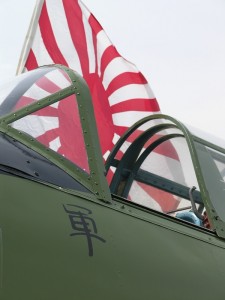 number of deaths and the continuing impact on the bilateral relationship, was the invasion of China by Japan that occurred in the 1930s. After first colonising Manchuria, in the Northeast of China, Japanese forces went on to occupy almost half of Chinese territory, committing widespread atrocities along the way. The most notorious of these atrocities was the Nanjing Massacre, a six-week orgy of violence and destruction during which as many as 300,000 Chinese, many of them civilians, were killed. Almost as notorious was the work of Unit 731, a Japanese research unit that conducted chemical testing on live Chinese prisoners of war. The occupation, including the colonisation of Manchuria, lasted a total of fourteen years, only coming to an end with Japan’s defeat in 1945.
number of deaths and the continuing impact on the bilateral relationship, was the invasion of China by Japan that occurred in the 1930s. After first colonising Manchuria, in the Northeast of China, Japanese forces went on to occupy almost half of Chinese territory, committing widespread atrocities along the way. The most notorious of these atrocities was the Nanjing Massacre, a six-week orgy of violence and destruction during which as many as 300,000 Chinese, many of them civilians, were killed. Almost as notorious was the work of Unit 731, a Japanese research unit that conducted chemical testing on live Chinese prisoners of war. The occupation, including the colonisation of Manchuria, lasted a total of fourteen years, only coming to an end with Japan’s defeat in 1945.
With the dawning of the Cold War era, the PRC and Japan did not normalise relations until 1972, following Richard Nixon’s visit to Beijing. During the negotiations to establish mutual diplomatic recognition the Chinese agreed to forgo any war reparations or compensation from Japan for its wartime atrocities. For the remainder of the 1970s the two enjoyed a warm relationship, culminating in the signing of the Treaty of Peace and Friendship in 1978 and, following China’s decision to embark on market reform, the initiation of a series of low-interest loans (frequently referred to as “Yen loans”) from Japan to China to fund development of industry and infrastructure. While never explicitly acknowledged as such by either party, these were widely considered to be in lieu of war reparations.
The “History Issue”
Despite the apparent thaw in relations it is widely acknowledged that the reconciliation between China and Japan was only ever at a superficial level. This is evidenced by the 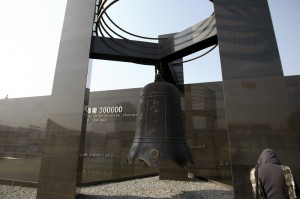 recurrence of what has come to be termed “the history issue” in the relationship. Though the countries normalized relations in 1972, the history issue did not rear its head until the early 1980s. An apparent revision of Japan’s history textbooks in the early 1980s, which seemed to downplay Japan’s invasion of China, sparked an angry response from China at both the societal and political levels. Though it transpired that this was a misunderstanding caused by reporting errors in the Japanese media, the damage had been done and this issue recurs each time Japan’s Education Ministry approves a set of history textbooks, normally every four years. In 2001 and 2005, this issue caused widespread anger in China when a book was approved that apparently downplayed the Nanjing Massacre and referred to the invasion of China has merely an “advance”. What is rarely understood in China is that the textbooks in question are produced by the Japanese Society for History Textbook Reform, a very narrowly focused right wing group that attracts little support in the wider Japanese society, and that they only appear on a list of books approved to be used, rather than being the set text. As a result, only a handful of Japanese schools have adopted these books with a reported 0.03% of Junior High School students actually studying them, a figure that would have been much lower were it not for the campaign group issuing free copies to schools for disabled students. Nevertheless, the approval sparked angry demonstrations across China with protest marches attracting in excess of ten thousand in several different cities and violent attacks on Japanese business interests and the Japanese Embassy in Beijing. Though some reports at the time suggested that the Chinese government played a role in organizing and inspiring these protests, later research showed this not to be the only driving force behind the outpouring.
recurrence of what has come to be termed “the history issue” in the relationship. Though the countries normalized relations in 1972, the history issue did not rear its head until the early 1980s. An apparent revision of Japan’s history textbooks in the early 1980s, which seemed to downplay Japan’s invasion of China, sparked an angry response from China at both the societal and political levels. Though it transpired that this was a misunderstanding caused by reporting errors in the Japanese media, the damage had been done and this issue recurs each time Japan’s Education Ministry approves a set of history textbooks, normally every four years. In 2001 and 2005, this issue caused widespread anger in China when a book was approved that apparently downplayed the Nanjing Massacre and referred to the invasion of China has merely an “advance”. What is rarely understood in China is that the textbooks in question are produced by the Japanese Society for History Textbook Reform, a very narrowly focused right wing group that attracts little support in the wider Japanese society, and that they only appear on a list of books approved to be used, rather than being the set text. As a result, only a handful of Japanese schools have adopted these books with a reported 0.03% of Junior High School students actually studying them, a figure that would have been much lower were it not for the campaign group issuing free copies to schools for disabled students. Nevertheless, the approval sparked angry demonstrations across China with protest marches attracting in excess of ten thousand in several different cities and violent attacks on Japanese business interests and the Japanese Embassy in Beijing. Though some reports at the time suggested that the Chinese government played a role in organizing and inspiring these protests, later research showed this not to be the only driving force behind the outpouring.
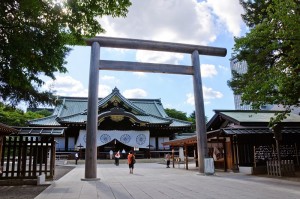 Another particularly sensitive matter is Yasukuni Shrine, a highly controversial Shinto shrine in Tokyo that honors all of Japan’s war dead. Under Shinto beliefs it is believed to be the resting place for the kami (loosely translated as souls) of all those who have died fighting for the Emperor of Japan since the shrine’s inception in the 1860s. This includes Class A war criminals that were convicted after Japan’s occupation of China of war crimes. Most notorious among these is Hideki Tojo, the wartime prime minister. After the Class A war criminals were enshrined in 1978 in a secret ceremony that was revealed a year later, the Emperor refused to visit the shrine again until his death a decade later. His successor has continued the policy of staying away in order not to offend Japan’s neighboring states. However, there have been several high profile visitors that have caused consternation in China (and other East Asian countries, most notable South Korea). In the early 1980s, it was commonplace for Prime Minister Nakasone to visit, until he did so on August 15th 1985, the fortieth anniversary of Japan’s surrender. In response to opposition in China, the General Secretary of the CCP, Hu Yaobang, personally requested that Nakasone stop these visits. Though two other prime ministers visited the shrine in the following 15 years, the issue was largely put to rest until Prime Minister Koizumi returned to the shrine in August 2001. He fulfilled his pledge to visit the shrine once a year while he was in office at great cost to the Sino-Japanese relationship at the highest political level and also at the societal level; bilateral summits were suspended and his actions created the impression among many Chinese that Japan had not fully repented for its previous wrongs and even a fear that it might return to its militaristic past. By the end of Koizumi’s tenure in 2006 the political relationship between the two powers had almost completely broken down and on several occasions popular Chinese anger spilled over into protest and even violence against Japanese in China. Subsequent prime ministers elected not to visit the shrine, allowing the political relationship to thaw once more, but this period serves to highlight that the issue of history is never far from the surface of Sino-Japanese relations. In fact, during the three years that the Democratic Party of Japan (DPJ) led the country from 2009 to 2012, the issue took a back seat in the relationship. However, it has begun to rear its head once more since the LDP (Koizumi’s party, and the overwhelmingly dominant force in Japanese politics since the end of the US occupation) regained power. In December 2013 Shinzo Abe, now in his second stint as prime minister, visited the shrine on the first anniversary of his return to the post. The act was greeted with anger from across the region but most notable in China and South Korea (with whom Japan has also had a difficult relationship in recent years). Abe has since refrained from visiting the shrine, though he has repeatedly sent offerings under his own name. Objections from the US that have become public since his December 2013 visit might provide an incentive for him not to return in person but even if it is a one-off it has put the shrine issue firmly back on the agenda of Sino-Japanese tension. To mark the 70th anniversary of Japan’s defeat in World War II, Abe made a significant and closely observed speech, repeating aspects of previous apologies but insisting that future generations should not be “condemned” to repeatedly apologize for actions in which they had no part. This was a clear indication that he wanted to move Japan away a position that he – and his supporters – consider to have been overly deferential to China in this area for too long. Such a shift does not go down well in China and this was underscored by Xi Jinping’s speech at its own commemorations of the 70th anniversary a few weeks later.
Another particularly sensitive matter is Yasukuni Shrine, a highly controversial Shinto shrine in Tokyo that honors all of Japan’s war dead. Under Shinto beliefs it is believed to be the resting place for the kami (loosely translated as souls) of all those who have died fighting for the Emperor of Japan since the shrine’s inception in the 1860s. This includes Class A war criminals that were convicted after Japan’s occupation of China of war crimes. Most notorious among these is Hideki Tojo, the wartime prime minister. After the Class A war criminals were enshrined in 1978 in a secret ceremony that was revealed a year later, the Emperor refused to visit the shrine again until his death a decade later. His successor has continued the policy of staying away in order not to offend Japan’s neighboring states. However, there have been several high profile visitors that have caused consternation in China (and other East Asian countries, most notable South Korea). In the early 1980s, it was commonplace for Prime Minister Nakasone to visit, until he did so on August 15th 1985, the fortieth anniversary of Japan’s surrender. In response to opposition in China, the General Secretary of the CCP, Hu Yaobang, personally requested that Nakasone stop these visits. Though two other prime ministers visited the shrine in the following 15 years, the issue was largely put to rest until Prime Minister Koizumi returned to the shrine in August 2001. He fulfilled his pledge to visit the shrine once a year while he was in office at great cost to the Sino-Japanese relationship at the highest political level and also at the societal level; bilateral summits were suspended and his actions created the impression among many Chinese that Japan had not fully repented for its previous wrongs and even a fear that it might return to its militaristic past. By the end of Koizumi’s tenure in 2006 the political relationship between the two powers had almost completely broken down and on several occasions popular Chinese anger spilled over into protest and even violence against Japanese in China. Subsequent prime ministers elected not to visit the shrine, allowing the political relationship to thaw once more, but this period serves to highlight that the issue of history is never far from the surface of Sino-Japanese relations. In fact, during the three years that the Democratic Party of Japan (DPJ) led the country from 2009 to 2012, the issue took a back seat in the relationship. However, it has begun to rear its head once more since the LDP (Koizumi’s party, and the overwhelmingly dominant force in Japanese politics since the end of the US occupation) regained power. In December 2013 Shinzo Abe, now in his second stint as prime minister, visited the shrine on the first anniversary of his return to the post. The act was greeted with anger from across the region but most notable in China and South Korea (with whom Japan has also had a difficult relationship in recent years). Abe has since refrained from visiting the shrine, though he has repeatedly sent offerings under his own name. Objections from the US that have become public since his December 2013 visit might provide an incentive for him not to return in person but even if it is a one-off it has put the shrine issue firmly back on the agenda of Sino-Japanese tension. To mark the 70th anniversary of Japan’s defeat in World War II, Abe made a significant and closely observed speech, repeating aspects of previous apologies but insisting that future generations should not be “condemned” to repeatedly apologize for actions in which they had no part. This was a clear indication that he wanted to move Japan away a position that he – and his supporters – consider to have been overly deferential to China in this area for too long. Such a shift does not go down well in China and this was underscored by Xi Jinping’s speech at its own commemorations of the 70th anniversary a few weeks later.
Slips of the tongue from Japanese politicians (that are not always unintentional) often cause anger and resentment in China as well. In his first period in office immediately succeeding Koizumi, Shinzo Abe managed to offend both China and South Korea by claiming that the issue of ‘comfort women’ – a euphemism for the thousands of women forced into sex slavery at the hands of the Japanese military during their occupation of East Asia – had been exaggerated, earning himself a telling off even from the US. More recently, the mayor of Nagoya declared that he did not believe that the Nanjing Massacre happened. This was particularly insensitive as he made the claim when welcoming a delegation from Nagoya’s sister city: Nanjing. It is this level of insensitivity – displayed by only a minority of Japanese but often by those who make themselves most well heard – that continues to cause frustration, bemusement and resentment among the Chinese. Even more recently, similar views have been expressed by one of the governors of NHK, Japan’s national broadcaster.
Territorial Disputes
The other major issue that threatens the stability of the bilateral relationship from time to time is the dispute over sovereignty of the Diaoyu Isalnds (known as Senkaku in Japanese). These uninhabited islands are currently administered by Japan, but are claimed by both countries (and also by Taiwan). It is widely believed that significant levels of resources, including oil and gas, may lie underneath the islands, as well as within the maritime EEZ that would accompany recognition of the sovereignty of the islands. Complicating the issue is China’s exploitation of the Chunxiao gas field; although there is no dispute over the sovereignty of the gas field itself, it is within four kilometres of what Japan considers to be its EEZ and it argues that China may siphon resources from its side. China disputes that this is likely and, in any case, does not accept Japan’s demarcation of its EEZ as it is based on Japanese sovereignty of the islands.
Attempts to resolve the dispute have been largely unsuccessful; during the negotiations for the Treaty of Peace and Friendship it was determined that the matter should be shelved and left for future generations to resolve. However, nationalist activists on both sides have sought to push forward their respective country’s claims to the islands, often leading to heightened diplomatic tensions between the two. One of the most serious incidents in recent times occurred in September 2010 when a Chinese fishing boat collided with a Japan Coast Guard ship that was patrolling the area. The captain and crew of the boat were all arrested and imprisoned in Japan, leading to a major diplomatic dispute between the two countries, with both governments accusing the other of violating sovereignty. The captain was eventually released without charge after Japanese prosecutors determined that action against him would harm Japan’s national interests, though a video was leaked to the media that showed the captain, apparently under the influence of alcohol, intentionally ramming his boat into the Japanese ship. The strength of China’s reaction shocked many in Japan as several Japanese businesspeople were arrested on fairly dubious grounds and exports of rare earths to Japan were apparently halted, though Beijing insisted that the issues were unconnected.
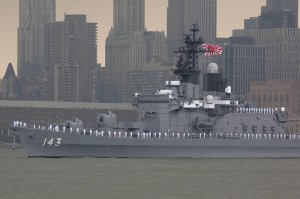 In 2012 Shintaro Ishihara, then the mayor of Tokyo and a right wing firebrand who had long campaigned for a tougher policy towards China, launch a campaign to nationalize the islands. The three largest islands had been in private ownership since Japan integrated them into its territory at the end of the eighteenth century. The family that held the rights to them had been keen to sell them on but was not willing to do so if there could be any threat to Japan’s sovereignty claims. As a result, Ishihara launched a bid to raise enough funds to buy the islands and vowed to take them under the umbrella of the Tokyo government. His plans also included the building of a harbor on the largest island, a move that would unquestionably have inflamed tensions with China and possibly have provoked a military response. When Ishihara’s campaign achieved its goal of raising sufficient funds, the national government decided it had no option but to move on the issue. The then-Prime Minister Yoshihiko Noda announced that the national government would purchase the islands and quickly struck an agreement with the family that owned them. This move was, without doubt, driven by a desire to lessen the tension with China as Ishihara’s plan was deemed highly provocative. Under the national government’s ownership no development of the islands would occur and the status quo would effectively be maintained. Noda clearly hoped that this move would be recognized by the Chinese and the response would be proportionate.
In 2012 Shintaro Ishihara, then the mayor of Tokyo and a right wing firebrand who had long campaigned for a tougher policy towards China, launch a campaign to nationalize the islands. The three largest islands had been in private ownership since Japan integrated them into its territory at the end of the eighteenth century. The family that held the rights to them had been keen to sell them on but was not willing to do so if there could be any threat to Japan’s sovereignty claims. As a result, Ishihara launched a bid to raise enough funds to buy the islands and vowed to take them under the umbrella of the Tokyo government. His plans also included the building of a harbor on the largest island, a move that would unquestionably have inflamed tensions with China and possibly have provoked a military response. When Ishihara’s campaign achieved its goal of raising sufficient funds, the national government decided it had no option but to move on the issue. The then-Prime Minister Yoshihiko Noda announced that the national government would purchase the islands and quickly struck an agreement with the family that owned them. This move was, without doubt, driven by a desire to lessen the tension with China as Ishihara’s plan was deemed highly provocative. Under the national government’s ownership no development of the islands would occur and the status quo would effectively be maintained. Noda clearly hoped that this move would be recognized by the Chinese and the response would be proportionate.
However, the nationalization of the islands proved to be a particularly hot topic in China and the response from Chinese society was the most serious that has been seen in any international issue in living memory. A series of scathing diplomatic attacks from the government served as a backdrop to widespread anti-Japanese protests across China. In total, 85 cities on the mainland witnessed large protests with many of these becoming violent. Japanese businesses and citizens were harassed, with even the ambassador’s car coming under attack in Beijing. Calls for boycotts of Japanese produce – a common response from nationalistic Chinese whenever a dispute with Japan occurs – appeared to have a greater effect than ever; in one bizarre demonstration of support for this idea a man set fire to his own Honda car in the middle of a Shanghai street. The economic relationship was demonstrably affected, with Japanese firms temporarily closing factories in China and laying off tens of thousands of workers. Sino-Japanese trade had previously been thought to be almost immune to the repeated spats between the two countries, but annual trade dropped by 4% in 2012. Two-way tourism figures fared even worse, with Chinese visitors to Japan down 33% in October 2012 compared with the previous year while the numbers of Japanese visitors to China fell by two thirds in the second half of 2012.
Since the nationalization China has stepped up “surveillance” of the areas surrounding the islands. Where once an unwritten agreement not to enter Japan’s de facto contiguous zone around the islands had kept the prospect of conflict to a bare minimum, China has since regularly flouted this norm. Though the incursions are frequently “Marine Surveillance” vessels rather than military ships, the possibility of conflict has been raised to its highest level since the two countries normalized relations in 1972. This was brought into sharp focus in December 2012 when a Chinese “Maritime Surveillance” plane entered the airspace of the islands, leading to the Japanese scrambling jets in response. A further escalation of the dispute in January 2013 occurred when the Japanese claimed that a Chinese PLAN frigate (a navy warship) had locked its radar onto a Japanese ship in the waters, suggesting that the first shots were about to be fired. Though China subsequently denied the incident the fact that such ships are now in frequent and close contact has significantly raised the possibility of a miscalculation that might trigger actual armed conflict between the two powers. The seriousness of the situation was heightened by a declaration from Hilary Clinton in January 2013 that the US’ joint security treaty with Japan covers the islands, thus obliging it to defend Japan if attacked by China. This raises the possibility of direct conflict between China and the US for the first time since the Korean War and is a stark reminder to all involved of the gravity of the situation. This was again brought into sharp focus in April 2013 when Prime Minister Abe issued a warning that Japan would respond with force to any attempt by China to land on the islands. Though this is would clearly be a war that would benefit nobody, it remains an unpalatable possibility.
In October 2013 China declared an Air Defense Identification Zone (ADIZ) above the East China Sea, including directly above the islands. This requires aircraft entering the zone – which is separate from China’s territorial airspace – to identify themselves to the Chinese authorities, log a flight path and retain open communications for the duration of the period of time in the zone. Although the zone is not unique – several of China’s neighbors have similar zones, including Japan – the sudden declaration and the more stringent requirements imposed by China have made this a controversial move that is clearly linked to the islands dispute. Aircraft from both Japan and the US have so far ignored the rules without serious consequence but the potential for miscalculation has clearly been raised even further by this development.
The islands issue has calmed somewhat in recent months but remains a potential flashpoint between the two countries. Certainly no resolution of the issue appears imminent and it has clearly played a role in Japan’s moves to reinterpret its Constitution in order to allow its military to play a role in collective self defense, a move that has caused a great deal of unease in a number of countries in the region, not least in China and South Korea.
The Taiwan Issue
When Japan defeated the Qing in the First Sino-Japanese War of 1894-5, one of its major prizes was the ceding of the island of Taiwan. Taiwan has not been ruled by Beijing since then, despite its continued claims of sovereignty. Though the Japanese were expelled after their defeat in 1945, its role and position within the Taiwan issue remains a cause of consternation for the Chinese. In particular Japan’s continued hosting of US forces on Okinawa, an island that is of clear strategic importance should the US ever seek to defend Taiwan in a conflict with China, causes friction with Beijing, though it should be noted that it is even more controversial in Okinawa itself where local people have long campaigned for the complete withdrawal of US forces.
Though Japan is firmly committed to the ‘one China’ policy that all countries with which Beijing has diplomatic ties must affirm, it continues to have close ties with the island. These ties are particularly evident in the field of business and Japan is Taiwan’s second largest trading partner with bilateral trade topping $70 billion in 2011. Japan also continues to have a close cultural relationship with the island, with Japanese pop music and television programs particularly popular. This successful ‘soft power’ irks the Chinese who see a continued threat to their claims of sovereignty from a power that has not only demonstrated a willingness to colonize in the past, but which also has a motivation for preventing or delaying the process of the ‘reunification’ of Taiwan and the mainland.
Bilateral Trade

Bilateral trade is the biggest area for optimism in the relationship, and it has been argued that the main factor in preventing open conflict from erupting has been the level of trade between the two. Japan has consistently been one of China’s biggest trading partners since early in the reform era, and has also been a source of significant inward FDI. In 2007 China became Japan’s biggest trading partner and, though Japan’s significance to China has declined relative to other major partners, the two remain closely interlinked. In 2010, bilateral trade reached $300 billion. Such interdependence was forged from a high level of complementarity between the two economies – China was in a position to provide plenty of cheap labor in return for investment and technological transfer at a time that Japanese firms found the need to expand and outsource away from Japan – in combination with a geographic proximity that allows relatively quick transport of both people and goods. In June 2012 direct trading between the RMB and the Yen began, bypassing the US dollar for the first time and making bilateral trade even easier. The trading relationship has remained robust through some of the most heated political disputes, and the relationship during the early 2000s, characterized by political spats over the history issue and popular anti-Japanese protests in China, came to be referred to as “zhengleng jingre” (cold politics, hot economics), though it could also be argued that such problems do impact on bilateral trade that could have been even more spectacular against the backdrop of smoother political ties. Notably, when China chose the partners for its high speed rail network it felt compelled to shun Japanese firms in response to domestic pressure from nationalists angered at Japan’s perceived continued provocations over the history issue. As a result, China’s network of high speed train network was put together by a combination of firms from France, Germany, Canada and China, among others. This represented a negative outcome for both sides, with the Japanese unable to cash in on Chinese investment in its infrastructure that has totaled $300 billion by 2012 and is expected to continue to rise as the network is expanded, while the Chinese ended up with a system that fell short of its original expectations and may have contributed to the fatal train crash in Wenzhou in 2011.
East Asian Regionalization
In recent years there has been some limited progress toward regional integration and institutionalization in East Asia. In some areas this has actually been a source of competition for influence between China and Japan such as in the development of ASEAN +1 and ASEAN +3, whereby the two countries have sought to engage with Southeast Asian countries in order to further their own interests rather than to develop frameworks for dealing directly with each other. However, the two countries’ involvement in the six-party talks over the North Korean nuclear issue that also included both of the Koreas, Russia, and the US, was a first step in the creation of a significant regional forum. Though not formally related to the six-party process which has now stalled, China and Japan, along with South Korea, now hold annual three-way summits, hosted on a rotational basis, that have begun to foster a much greater sense of understanding and cooperation between the three powers. While it is significant that South Korea is involved in this, it is the engagement of China and Japan that has the greatest potential for positive impact on the region going forward. However, the islands dispute between China and Japan (as well as another territorial dispute between Japan and South Korea) the erupted again in 2012 has stalled the process. The 2013 summit was indefinitely postponed and although never formally abandoned, there has not been a summit since 2012.
Future Trends
The Sino-Japanese relationship is, arguably, the most important bilateral relationship in 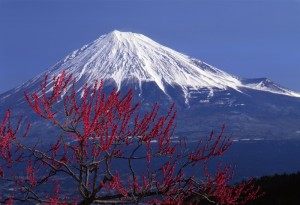 East Asia. Many tensions remain, particularly over the history issue and the Diaoyu/Senkaku dispute. While the former of these problems has appeared to have been handled sensibly on both sides since the resignation of Koizumi, it remains a deeply-rooted issue that retains the potential to be the cause of significant mistrust and ill-feeling, something that was potently demonstrated by Abe’s visit to Yasukuni Shrine in 2013. That mistrust of Japan’s apparent moves towards normalization of its military forces is played out in the arena of this historical ill-feeling underlines how important the interpretation of history is in the bilateral relationship, even when considering contemporary issues. The territorial dispute appears equally unlikely to be wholly resolved any time soon, with the positions of both countries entrenched and apparently irreconcilable. The trawler incident in 2010 demonstrated how easily this issue can come to the fore and become a major stumbling block in improving Sino-Japanese relations. Furthermore, the nationalization and subsequent flare-up of tensions from 2012 onwards has shown how dangerous this issue is. However, both sides have ordinarily demonstrated the political resolve to prevent either of these two issues from spilling over into open conflict, and a return to military warfare seems highly unlikely, even if it is no longer entirely unthinkable. The strength of the economic relationship, while declining in relative importance to China, continues to grow and remains both a motivation for, as well as a method of, mitigating the undoubted tensions that do exist between the two powers.
East Asia. Many tensions remain, particularly over the history issue and the Diaoyu/Senkaku dispute. While the former of these problems has appeared to have been handled sensibly on both sides since the resignation of Koizumi, it remains a deeply-rooted issue that retains the potential to be the cause of significant mistrust and ill-feeling, something that was potently demonstrated by Abe’s visit to Yasukuni Shrine in 2013. That mistrust of Japan’s apparent moves towards normalization of its military forces is played out in the arena of this historical ill-feeling underlines how important the interpretation of history is in the bilateral relationship, even when considering contemporary issues. The territorial dispute appears equally unlikely to be wholly resolved any time soon, with the positions of both countries entrenched and apparently irreconcilable. The trawler incident in 2010 demonstrated how easily this issue can come to the fore and become a major stumbling block in improving Sino-Japanese relations. Furthermore, the nationalization and subsequent flare-up of tensions from 2012 onwards has shown how dangerous this issue is. However, both sides have ordinarily demonstrated the political resolve to prevent either of these two issues from spilling over into open conflict, and a return to military warfare seems highly unlikely, even if it is no longer entirely unthinkable. The strength of the economic relationship, while declining in relative importance to China, continues to grow and remains both a motivation for, as well as a method of, mitigating the undoubted tensions that do exist between the two powers.


